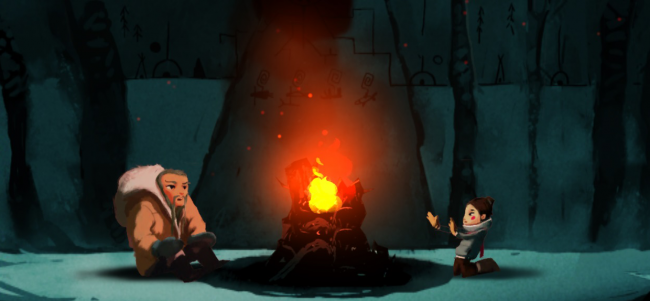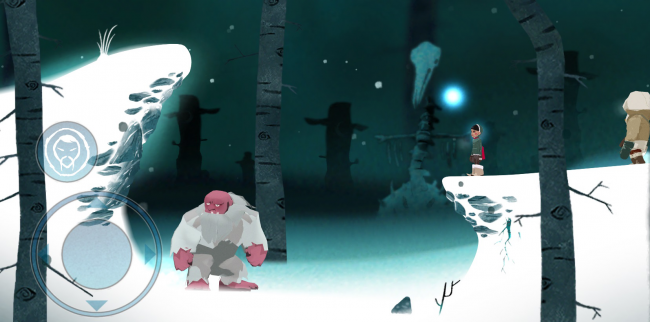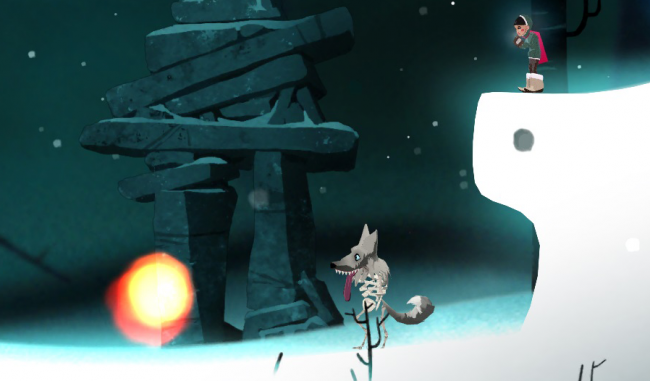- Wondering how to get Monopoly GO! free rolls? Well, you’ve come to the right place. In this guide, we provide you with a bunch of tips and tricks to get some free rolls for the hit new mobile game. We’ll …
Best Roblox Horror Games to Play Right Now – Updated Weekly
By Adele Wilson
Our Best Roblox Horror Games guide features the scariest and most creative experiences to play right now on the platform!The BEST Roblox Games of The Week – Games You Need To Play!
By Sho Roberts
Our feature shares our pick for the Best Roblox Games of the week! With our feature, we guarantee you'll find something new to play!Type Soul Clan Rarity Guide – All Legendary And Common Clans Listed!
By Nathan Ball
Wondering what your odds of rolling a particular Clan are? Wonder no more, with my handy Type Soul Clan Rarity guide.
Last Inua Review
A father and son battling harsh elements and demonic corruption as they attempt to restore the three guardian spirits of the land: This is Last Inua, a 2D side-scrolling tale of survival in the deep Arctic, a visually stunning game that approaches excellence but ultimately overstays its welcome.
Last Inua is an “art-platformer,” a term I just now made up to describe platformers with powerful aesthetics and unremarkable gameplay – although calling it “unremarkable” might in some instances be overly harsh. In most cases it’s really just simplified, which I suspect is a conscious choice intended to encourage all players, even those of dubious skills, to reach the end and enjoy the entirety of the experience.

Last Inua is very much like that. It’s the the story of the Inuit Ataataq and his son Hiko, who are racing to restore three guardian spirits in order to foil an attack on the North by the demon Tonrar. Ataataq is a powerful man, able to leap great distances, climb frozen cliffs and shatter massive blocks of ice with a single blow. His son Hiko is sickly and weak, but possesses magical abilities that allow him to walk through the air and travel great distances in the blink of an eye. They must work together to survive and triumph, and you’ll switch back and forth between them many times as you play, relying on both Ataataq’s strength and Hiko’s magic in equal measures.

Stunning, Yet Shallow
A father and son battling harsh elements and demonic corruption as they attempt to restore the three guardian spirits of the land: This is Last Inua, a 2D side-scrolling tale of survival in the deep Arctic, a visually stunning game that approaches excellence but ultimately overstays its welcome.
Last Inua is an “art-platformer,” a term I just now made up to describe platformers with powerful aesthetics and unremarkable gameplay – although calling it “unremarkable” might in some instances be overly harsh. In most cases it’s really just simplified, which I suspect is a conscious choice intended to encourage all players, even those of dubious skills, to reach the end and enjoy the entirety of the experience.

Last Inua is very much like that. It’s the the story of the Inuit Ataataq and his son Hiko, who are racing to restore three guardian spirits in order to foil an attack on the North by the demon Tonrar. Ataataq is a powerful man, able to leap great distances, climb frozen cliffs and shatter massive blocks of ice with a single blow. His son Hiko is sickly and weak, but possesses magical abilities that allow him to walk through the air and travel great distances in the blink of an eye. They must work together to survive and triumph, and you’ll switch back and forth between them many times as you play, relying on both Ataataq’s strength and Hiko’s magic in equal measures.
It’s very simple to play, even for unskilled run-and-jumpers like me, and as long as you have the patience for it, reaching the finish isn’t going to be an issue. Movement is controlled by way of a fixed, two-axis virtual thumbpad that’s pleasantly responsive without being twitchy, and levels are generally short with tightly-packed checkpoint saves, so there’s no need to worry about committing large chunks of time to make progress or losing it if you happen to fall victim to misfortune. Even the supernatural beasts who prowl the land are easy to evade thanks to AI that can generously be described as “slow.”

The game also manages to avoid complexity by making interactions context-sensitive and controllable with a single button. The default state of Ataataq’s button is “jump,” but when he needs to punch something, it automatically becomes a “punch” button, and climbing walls is simply a matter of walking or jumping at them, whereupon he pulls his axes and begins his ascent. Hiko doesn’t have an action button at all: When he reaches an area where he needs to employ a power, a glowing spot appears on the screen to tell you to tap or drag – and when he doesn’t need to use his powers, he can’t. The levels themselves are almost perfectly linear and laid out very simply, so confusion (or any kind of meaningful decision-making) just isn’t going to happen.
But the downside to that kind of simplicity is that it can grow dull, especially when nearly every level is virtually identical, as they are in Last Inua. There is one segment inside the bowels of a giant polar bear that breaks up the monotony, but aside from that you’ll spend the entire game outside in the snowing, blowing, howling lands of the Arctic, performing the same limited range of actions from the very first to the very end. The truth is that there’s just not enough variety to support its length, even though it’s only a few hours long.

At the same time, I can’t deny that I was taken in by Last Inua‘s striking visual style and effects. It’s stark and bleak, but remarkably beautiful at the same time, and the minimalist representation of the connection between Ataataq and Hiko – they only speak to hauntingly call out to one another for aid – doesn’t undermine its obvious power. And while I don’t know nearly enough about Inuit mythology to comment on the game’s authenticity, I was duly impressed by its representation.
I liked Last Inua a lot, but I also regret that it ultimately wasn’t as good as it could have been. The end of the game really drove that feeling home; it’s touching, even moving, but too abrupt and unexplored to really hit the mark. It left me with the feeling that the team ran out of time or money, or perhaps both, and had to wrap things up much more quickly than originally intended. That’s not to say that Last Inua is incomplete, just unfulfilled: The story is engaging and the presentation outstanding, but the game itself is repetitive and uninspired – a great, stormy mass of potential that just isn’t quite met.

The good

The bad
More articles...
Monopoly GO! Free Rolls – Links For Free Dice
By Glen Fox
Wondering how to get Monopoly GO! free rolls? Well, you’ve come to the right place. In this guide, we provide you with a bunch of tips and tricks to get some free rolls for the hit new mobile game. We’ll …Best Roblox Horror Games to Play Right Now – Updated Weekly
By Adele Wilson
Our Best Roblox Horror Games guide features the scariest and most creative experiences to play right now on the platform!The BEST Roblox Games of The Week – Games You Need To Play!
By Sho Roberts
Our feature shares our pick for the Best Roblox Games of the week! With our feature, we guarantee you'll find something new to play!Type Soul Clan Rarity Guide – All Legendary And Common Clans Listed!
By Nathan Ball
Wondering what your odds of rolling a particular Clan are? Wonder no more, with my handy Type Soul Clan Rarity guide.







